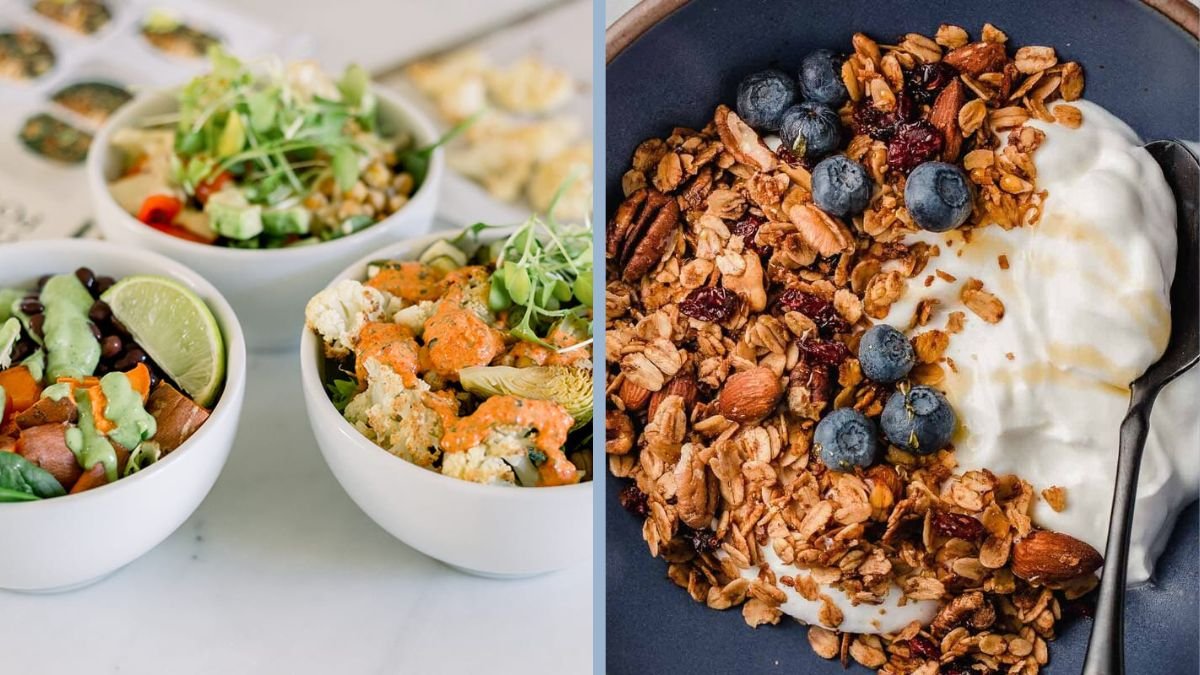In today’s fast-paced lifestyle, balancing work, family, and personal commitments often leaves little time for elaborate meal preparation. Nutritionists consistently recommend keeping a selection of healthy, versatile staples in the kitchen to create quick, balanced meals without compromising on nutrition. These staples provide essential nutrients, are easy to store, and allow for flexible, time-efficient cooking.
This article explores five nutrient-dense staples that nutritionists consider indispensable for quick, wholesome meals. Each item is plant-based, rich in vitamins, minerals, protein, and fiber, and adaptable to a variety of cuisines and flavors. By stocking these staples, home cooks can ensure they have the tools to prepare nourishing meals in minimal time.
1. Canned or Cooked Legumes
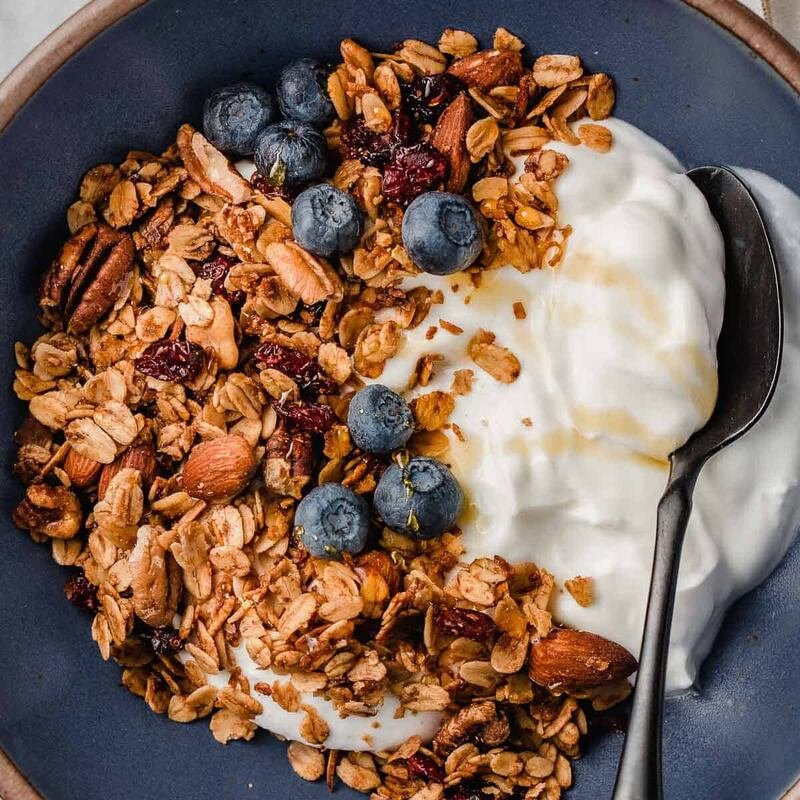
Examples: Chickpeas, black beans, lentils, kidney beans
Nutritional Benefits:
Legumes are a powerhouse of plant-based protein, fiber, and micronutrients such as iron, magnesium, and folate. One cup of cooked lentils provides approximately 18 grams of protein and 16 grams of fiber, supporting muscle health, digestive function, and satiety.
Practical Uses for Quick Meals:
- Salads: Toss canned chickpeas or black beans with greens, cherry tomatoes, and olive oil for an instant nutrient-rich salad.
- Stir-Fries: Add pre-cooked lentils to sautéed vegetables for a protein-packed dish.
- Soups and Stews: Combine legumes with canned tomatoes, spices, and vegetable broth for hearty, one-pot meals.
- Wraps and Tacos: Mash beans with spices for a quick filling in tortillas or pita bread.
Tips for Efficiency:
- Keep both canned and dried legumes on hand. Canned beans save time, while dried beans are cost-effective for batch cooking.
- Rinse canned beans to reduce sodium content.
- Prepare large batches of legumes in advance and freeze portions for quick weeknight use.
2. Whole Grains
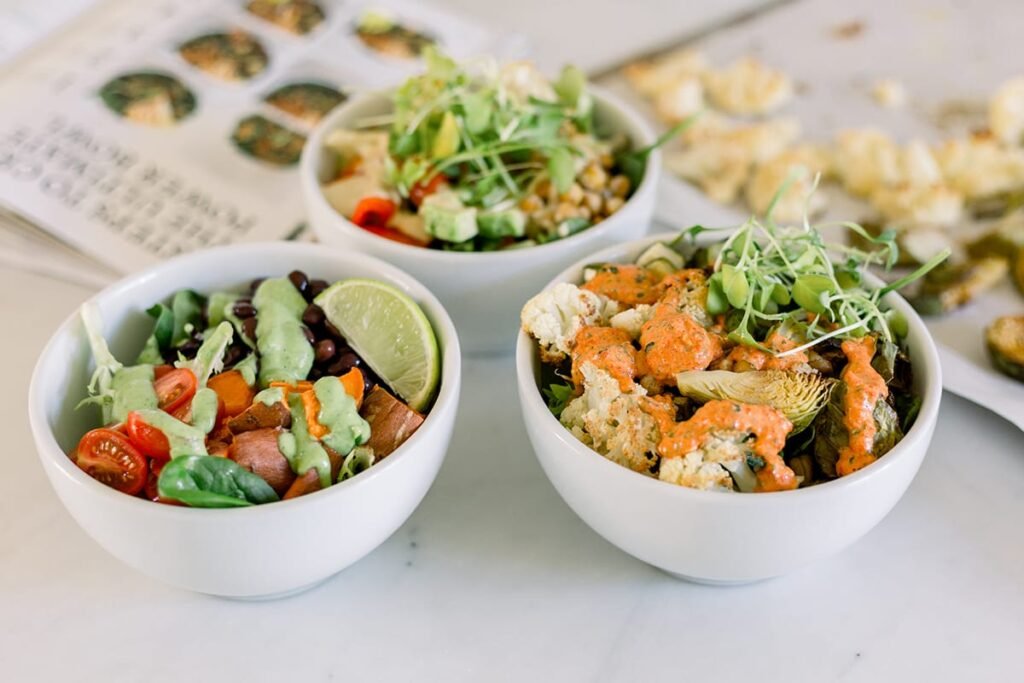
Examples: Quinoa, brown rice, farro, bulgur, oats
Nutritional Benefits:
Whole grains are rich in complex carbohydrates, fiber, protein, B vitamins, and minerals such as magnesium and selenium. Quinoa, a complete protein, contains all nine essential amino acids, making it particularly valuable in vegetarian diets. Whole grains help maintain energy, stabilize blood sugar levels, and promote digestive health.
Practical Uses for Quick Meals:
- Grain Bowls: Combine cooked grains with roasted vegetables, legumes, and a simple dressing for a balanced, fast meal.
- Stir-Fries: Use cooked grains as a base for vegetable or tofu stir-fries.
- Breakfast-for-Dinner: Make oatmeal topped with nuts, seeds, and fruits for a nutrient-rich evening meal.
- Casseroles: Use grains as a base for layered vegetable or bean casseroles, which can be reheated quickly.
Tips for Efficiency:
- Pre-cook grains and store in airtight containers for several days.
- Choose quick-cooking grains like quinoa or bulgur for rapid meal preparation.
- Use frozen or pre-cooked grain blends to reduce cooking time.
3. Frozen Vegetables
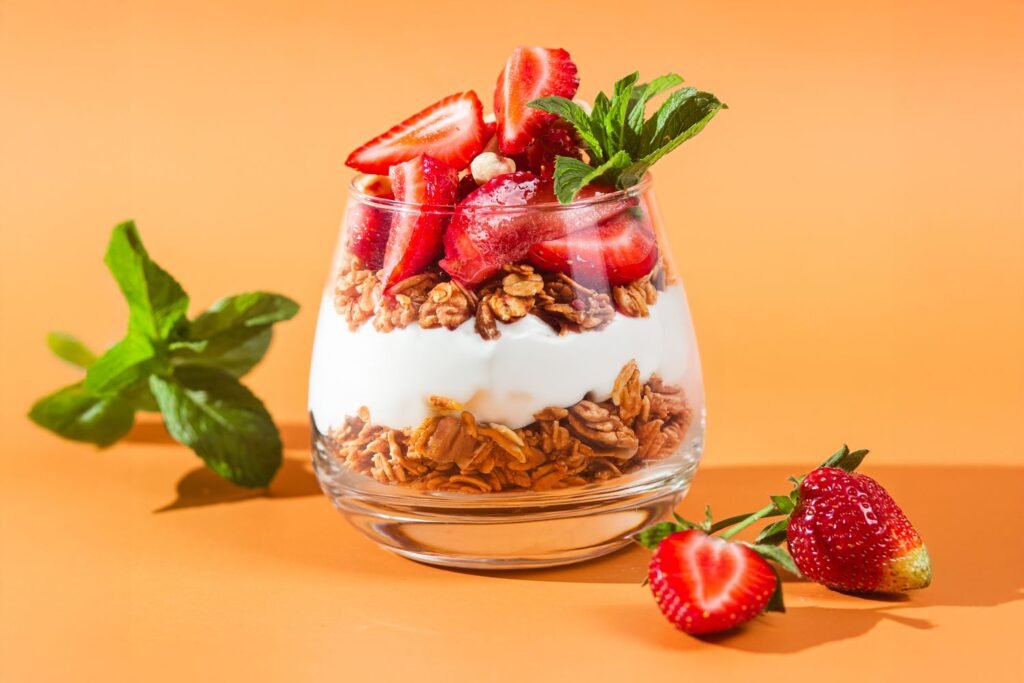
Examples: Broccoli, spinach, peas, mixed vegetable medleys
Nutritional Benefits:
Frozen vegetables retain most of their nutrients, including vitamins, minerals, and fiber. They provide a convenient and versatile way to increase vegetable intake without sacrificing nutritional quality. Fiber supports digestive health and contributes to satiety, while vitamins and antioxidants support immune function and overall wellness.
Practical Uses for Quick Meals:
- Stir-Fries: Sauté frozen vegetables with garlic, ginger, and olive oil for a rapid, nutrient-dense dish.
- Soups and Curries: Add frozen vegetables directly to soups, stews, and curries for instant nutrition.
- Pasta Dishes: Toss frozen peas, spinach, or broccoli into pasta or grain dishes for added color and nutrients.
- Smoothies: Use spinach, kale, or peas in blended smoothies to boost vitamin and mineral content.
Tips for Efficiency:
- Keep a variety of frozen vegetables to rotate flavors and textures.
- Steam or sauté frozen vegetables directly without thawing to preserve texture and nutrients.
- Combine with grains or legumes for complete, balanced meals.
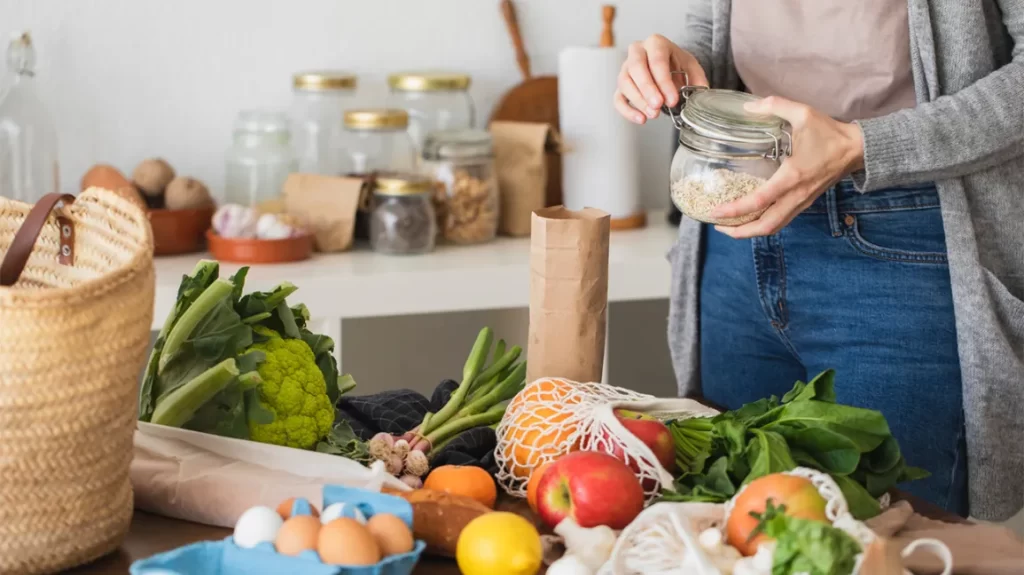
4. Nuts and Seeds
Examples: Almonds, walnuts, cashews, sunflower seeds, chia seeds, flaxseeds
Nutritional Benefits:
Nuts and seeds are rich in protein, healthy fats, fiber, and essential micronutrients like magnesium, zinc, and vitamin E. They support heart health, cognitive function, and satiety, making them ideal for snacking or adding to meals for additional nutrient density.
Practical Uses for Quick Meals:
- Salads and Bowls: Sprinkle nuts or seeds over salads and grain bowls for added texture and protein.
- Smoothies: Blend chia seeds or flaxseeds into smoothies for fiber and omega-3 fatty acids.
- Homemade Energy Bars: Combine nuts, seeds, and dried fruit to make protein-rich snacks.
- Sauces and Dressings: Use soaked cashews to make creamy, plant-based sauces or dressings.
Tips for Efficiency:
- Pre-roast or toast nuts and seeds to enhance flavor and extend shelf life.
- Store in airtight containers to maintain freshness.
- Keep small portions ready for quick grab-and-go snacks or meal additions.
5. Canned Tomatoes and Tomato Paste
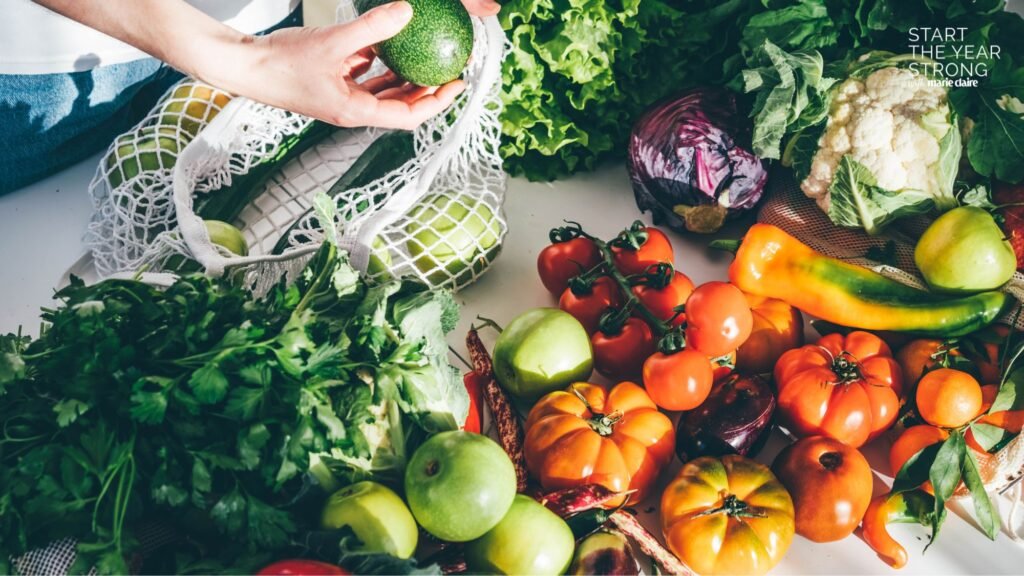
Nutritional Benefits:
Tomatoes are rich in vitamin C, potassium, folate, and lycopene, an antioxidant associated with cardiovascular and overall health. Canned tomatoes and tomato paste provide convenient, nutrient-dense options for adding flavor and vitamins to quick meals without extensive preparation.
Practical Uses for Quick Meals:
- Pasta Sauces: Simmer canned tomatoes with garlic, herbs, and spices for a rapid, flavorful sauce.
- Curries and Stews: Add tomato paste to lentil, chickpea, or vegetable curries for depth of flavor and additional antioxidants.
- Shakshuka-Inspired Dishes: Use tomatoes as a base for sautéed vegetables or tofu in a savory skillet meal.
- Soups: Combine with legumes, vegetables, and broth for quick, hearty soups.
Tips for Efficiency:
- Keep diced, crushed, and pureed varieties for different recipe applications.
- Store opened cans in airtight containers in the refrigerator for up to a week.
- Pair with fresh or dried herbs to enhance flavor without additional sodium or fat.
Practical Tips for Quick, Healthy Meals
- Combine Staples Creatively: Mix grains, legumes, vegetables, nuts, and seeds to create balanced meals in under 20 minutes.
- Batch Prep Ingredients: Cook grains and legumes in bulk to simplify weekday meals.
- Season Strategically: Use herbs, spices, and citrus to enhance flavor without relying on processed sauces.
- Use Versatile Staples: Choose ingredients that can be used across multiple cuisines to reduce meal fatigue.
- Prioritize Shelf Life: Stock pantry staples that are long-lasting, such as dried legumes, canned goods, and frozen vegetables, to minimize waste.
Health Benefits and Functional Properties
Keeping these five staples on hand supports several aspects of health:
- Protein Intake: Legumes, nuts, seeds, and certain grains provide plant-based protein to support muscle repair, immunity, and satiety.
- Fiber and Digestion: Whole grains, legumes, and vegetables promote gut health and stable energy levels.
- Heart Health: Nuts, seeds, and tomatoes provide unsaturated fats, antioxidants, and anti-inflammatory compounds.
- Balanced Nutrition: Combining these staples ensures intake of essential vitamins, minerals, and healthy fats for overall wellness.
- Convenience and Sustainability: Using nutrient-dense staples reduces the need for processed foods and allows for efficient, wholesome meal preparation.
Environmental and Dietary Considerations
Plant-based staples offer sustainability advantages:
- Reduced Animal Product Dependence: Minimizes carbon footprint while supporting vegetarian or vegan diets.
- Minimal Processing: Whole grains, legumes, nuts, and seeds retain nutrient density without additives.
- Seasonal and Local Options: Locally sourced grains and vegetables reduce transportation emissions and support regional agriculture.
- Waste Reduction: Long shelf-life pantry staples allow for efficient meal planning and minimize food spoilage.
Conclusion
Stocking healthy staples in the pantry empowers home cooks to prepare quick, nutrient-dense meals with minimal effort. Legumes, whole grains, frozen vegetables, nuts and seeds, and canned tomatoes provide protein, fiber, essential vitamins, and healthy fats, supporting satiety, energy, and overall health.
These staples are versatile, plant-based, and adaptable to a wide range of cuisines and meal types. By creatively combining these ingredients, busy weeknights can become opportunities to enjoy wholesome, flavorful meals without sacrificing nutrition.
With careful selection, batch preparation, and thoughtful storage, these five staples allow individuals to maintain a balanced, convenient, and health-conscious diet. Nutritionists emphasize these ingredients not only for their nutrient density but also for their practicality, making them essential for anyone seeking quick, nourishing meals in today’s fast-paced world.
